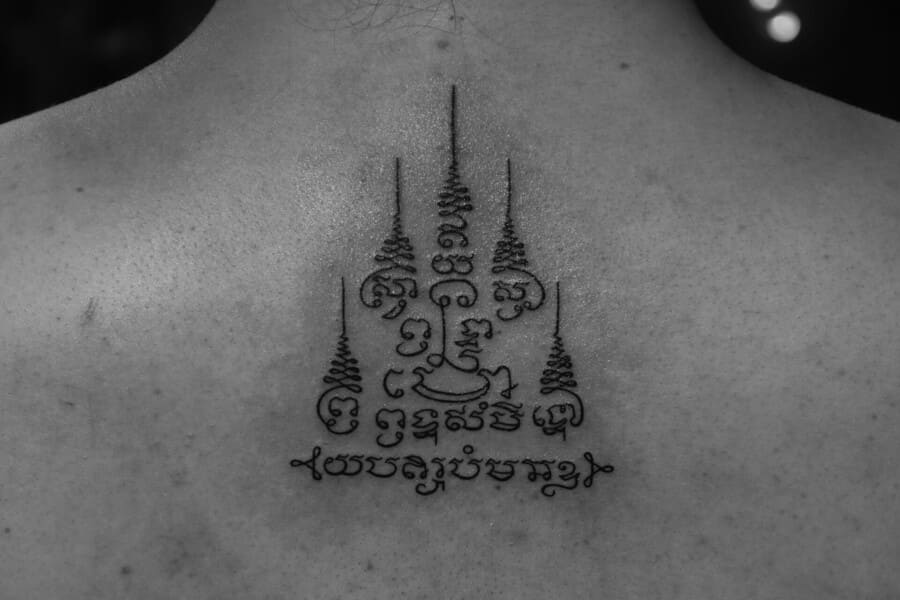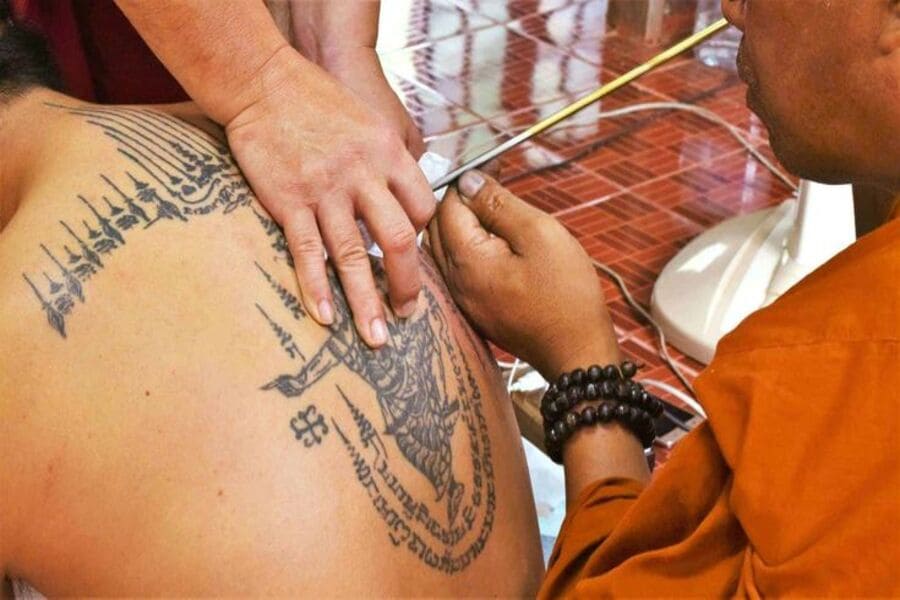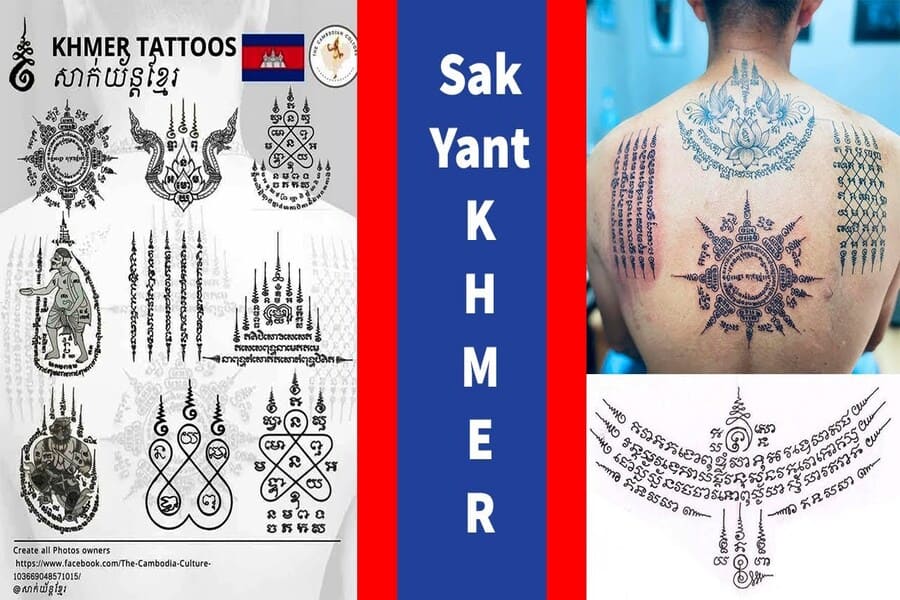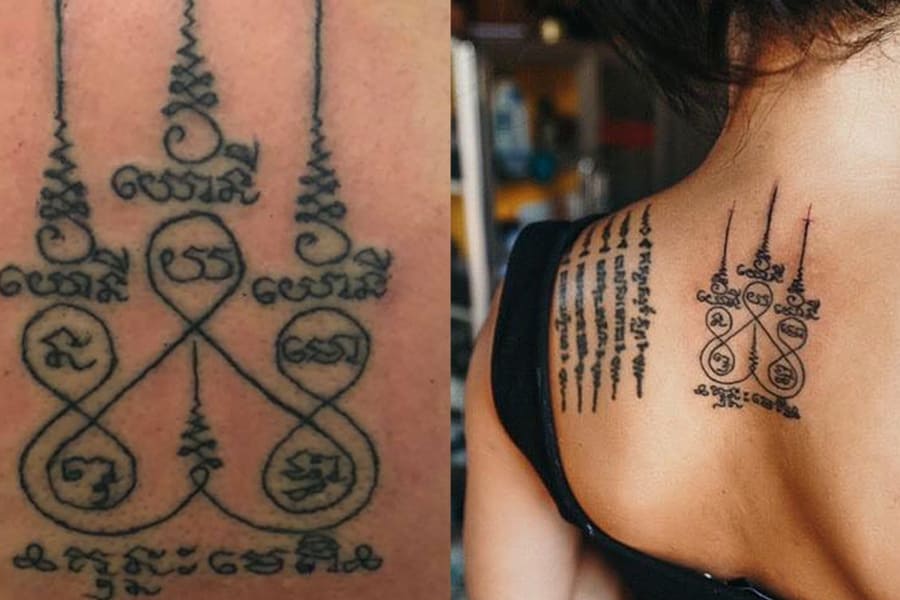Embarking on cambodia tours unveils not only the country's breathtaking landscapes and ancient temples but also a resurgence of a centuries-old tradition: traditional Khmer tattoo art. In recent years, there has been a notable revival of interest in this ancient practice, once on the brink of fading into obscurity. Traditional Khmer tattooing, with its intricate designs and rich cultural significance, is experiencing a renaissance, captivating both locals and visitors alike.
Contents
Origins of Traditional Khmer Tattoo Art in Cambodia
The origins of traditional Khmer tattoo art in Cambodia can be traced back centuries to the ancient civilizations that once thrived in the region. Tattooing has been an integral part of Khmer culture for millennia, with evidence of its practice dating back to the Funan and Chenla periods, as early as the 1st century CE. During this time, tattoos held significant cultural and spiritual significance, serving as symbols of protection, status, and identity within Khmer society.
One of the earliest references to tattooing in Cambodia can be found in ancient inscriptions and historical texts, which describe the use of tattoos among warriors, priests, and royalty. Tattoos were believed to imbue wearers with supernatural powers, offering protection in battle and ensuring prosperity and fertility. Designs often featured intricate patterns, mythical creatures, and religious symbols, reflecting the cosmology and belief systems of the Khmer people.
As Khmer civilization flourished and evolved over the centuries, so too did the practice of tattooing. During the Angkor period (9th to 15th centuries), tattoos became more elaborate and stylized, with distinct regional variations emerging across the Khmer Empire. Tattoo artists, known as "kru khom," were highly respected members of society, revered for their skill and expertise in the sacred art of tattooing.
However, with the decline of the Angkor Empire and the onset of colonialism and modernization in Cambodia, traditional Khmer tattoo art began to wane in popularity. Western influences and cultural stigma led to the marginalization and suppression of tattooing practices, pushing them to the fringes of society.
In recent years, there has been a remarkable resurgence of interest in traditional Khmer tattoo art, fueled by a renewed sense of cultural pride and identity among Cambodians. Tattoo artists and enthusiasts are rediscovering and reviving ancient designs and techniques, drawing inspiration from historical sources and cultural heritage.
Traditional designs and techniques Traditional Khmer Tattoo Art in Cambodia
Traditional Khmer tattoo art in Cambodia is characterized by intricate designs and techniques that have been passed down through generations. These designs often draw inspiration from ancient Khmer motifs, religious symbols, and cultural heritage, reflecting the cosmology, beliefs, and values of Khmer society. Here are some traditional designs and techniques commonly found in Khmer tattoo art:
Yantra Tattoos:
Yantra tattoos are geometric patterns and sacred symbols derived from Buddhist and Hindu traditions. These tattoos are believed to offer protection, blessings, and spiritual empowerment to the wearer. Common yantra motifs include lotus flowers, mythical creatures, and sacred mantras.
Animals and Mythical Creatures:
Traditional Khmer tattoos often feature depictions of animals and mythical creatures from Khmer folklore and mythology. These include lions, elephants, naga serpents, and garudas, each symbolizing different virtues and qualities such as strength, wisdom, and protection.
Sak Yant Tattoos:
Sak yant tattoos are traditional Thai and Khmer tattoos that incorporate magical spells and blessings into their designs. These tattoos are often hand-poked using a long metal rod or bamboo stick, following ancient rituals and techniques passed down by Buddhist monks and spiritual masters.
Khmer Script and Text:
Khmer script, known as "Aksar Khmer," is often incorporated into traditional Khmer tattoo designs, featuring meaningful words, phrases, or mantras in ancient script. These tattoos may convey messages of protection, prosperity, or spiritual guidance.
Lotus Flowers:
The lotus flower holds deep symbolism in Khmer culture, representing purity, enlightenment, and spiritual growth. Traditional Khmer tattoos may feature stylized lotus flowers in various stages of bloom, symbolizing the journey of the soul towards enlightenment.
Traditional Hand-Poking Techniques:
Traditional Khmer tattooing techniques involve hand-poking or hand-tapping the skin with a needle or bamboo stick, a process known as "sak." This method requires precision, skill, and patience, as the tattoo artist meticulously creates intricate designs one dot at a time.
Natural Pigments:
Traditional Khmer tattoos are often inked using natural pigments derived from plants, minerals, or animal sources. These organic pigments produce earthy tones and subtle shades that age gracefully over time, enhancing the timeless beauty of the tattoo.
Cultural and spiritual significance of Traditional Khmer Tattoo Art in Cambodia
Traditional Khmer tattoo art holds profound cultural and spiritual significance in Cambodia, serving as more than just decorative body adornment. For centuries, tattoos have played a central role in Khmer society, symbolizing identity, status, and spirituality. Here are some aspects of the cultural and spiritual significance of traditional Khmer tattoo art in Cambodia:
Cultural Identity:
Traditional Khmer tattoos are deeply intertwined with Cambodian identity and heritage, representing a connection to the country's rich history and cultural traditions. The designs and motifs used in Khmer tattoo art reflect ancient Khmer symbolism, mythology, and belief systems, fostering a sense of cultural pride and belonging among Cambodians.
Spiritual Protection:
Khmer tattoos are believed to offer spiritual protection and blessings to the wearer, serving as talismans against malevolent forces and harm. The intricate designs and sacred symbols incorporated into traditional Khmer tattoos are believed to ward off evil spirits, promote good fortune, and ensure the wearer's well-being.
Rites of Passage:
Traditional Khmer tattooing often marks significant rites of passage in a person's life, such as coming of age ceremonies, marriages, or religious initiations. These tattoos serve as symbols of maturity, wisdom, and social status within Khmer society, signifying the individual's transition into adulthood and their acceptance of cultural norms and responsibilities.
Connection to Ancestral Traditions:
Traditional Khmer tattoo art is deeply rooted in ancestral traditions and spiritual practices that have been passed down through generations. Tattoo designs and techniques are often handed down within families or passed on by respected tattoo masters, preserving ancient knowledge and wisdom for future generations.
Cultural Resilience:
In the face of colonialism, globalization, and social change, traditional Khmer tattoo art represents a form of cultural resilience and resistance against cultural erasure. By reclaiming and reviving ancient tattooing practices, Cambodians reaffirm their cultural identity and assert their autonomy in preserving and celebrating their heritage.
Spiritual Connection:
Khmer tattoos are imbued with spiritual significance, representing a connection between the physical and spiritual realms. The act of receiving a tattoo is often accompanied by rituals, prayers, and blessings, creating a sacred bond between the wearer, the tattoo artist, and the divine forces believed to inhabit the tattooed symbols.
The resurgence of traditional Khmer tattoo art in Cambodia signifies a powerful cultural revival, reconnecting modern Cambodians with their rich heritage. As these intricate designs gain popularity, they foster a renewed sense of identity and pride, bridging the past with the present. This revival not only preserves an important aspect of Khmer culture but also promotes artistic expression and cultural continuity. By celebrating and embracing traditional Khmer tattoo art, Cambodia ensures that its ancient symbols and stories continue to inspire and resonate with future generations.




